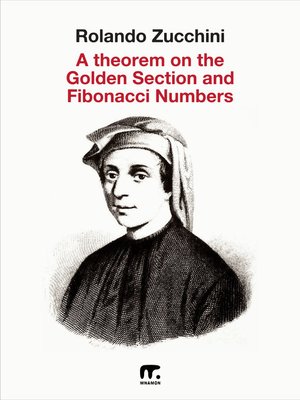
Sign up to save your library
With an OverDrive account, you can save your favorite libraries for at-a-glance information about availability. Find out more about OverDrive accounts.
Find this title in Libby, the library reading app by OverDrive.



Search for a digital library with this title
Title found at these libraries:
| Library Name | Distance |
|---|---|
| Loading... |
The golden section of a segment is the part of the segment mean proportional between the whole segment and the remaining part.
Almost all scholars say that Fibonacci has invented his very famous sequence by observing the reproduction of rabbits or other phenomena occurring in nature.
In this text, Rolando Zucchini affirm instead that he discovered it by studying the golden section (golden section), and in particular, as shown, by the theorem that generates it.
Fibonacci
Leonardo Pisano, known as Fibonacci (Pisa, b. 1170-1240 (?)), introduced in Europe the zero and the Hindu-Arabic numeral system and so he started the development of arithmetic as we know it today, when, in 1202, he published his most famous book Liber Abaci. In the incipit of this book he writes: "The nine Indian figures are: 9 8 7 6 5 4 3 2 1. With these nine figures, and with the sign 0, that the Arabs call Zefiro, any number may be written, as shown below"
Italian mathematician
Rolando Zucchini taught mathematics in high schools with innovative teaching methods, linking it to its history and philosophy.







